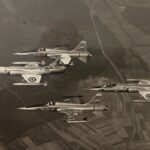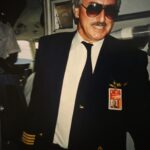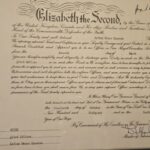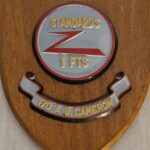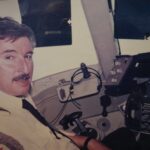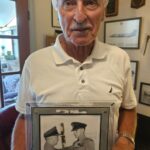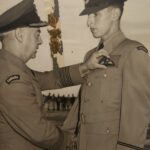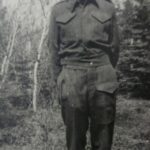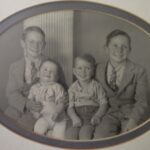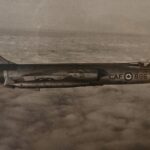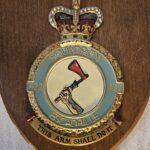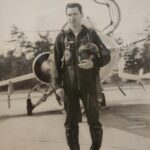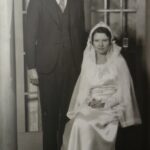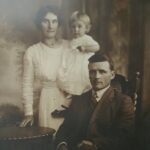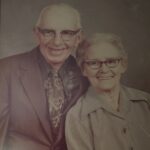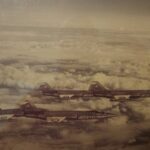Art Cameron was born September 29, 1939 in St. Peter’s Bay, P.E.I. He grew up there against the backdrop of the Second World War, living on a mixed farm in Head of Hillsborough with his numerous siblings and attending the College at Prince of Wales in Charlottetown. He remembers the 1950s as a period of change in P.E.I.: the Cold War began to escalate, and American influences appeared all across Canada, including jeans and rock music on the car radio. In the early 1960s, Art would be the first in his family to go “up to Canada” when he decided to join the forces. He had some experience in army cadets and on the sea hoisting lobster traps, and Art knew that the land and sea were not for him, so he decided to join the RCAF. His first posting was at Centralia, Ontario,where he trained on Chipmunks, Harvards, and T-33s. He next headed to the Prairies, where he instructed on Harvards at Penhold, Alberta and Tutors in Gimli, Manitoba. Then he went to Chatham, N.B. for training on F-86 Sabres. His goal was to get on the CF-104 Starfighter, which was emerging as Canada’s key tactical fighter aircraft in that time period. Art was able to do this, as he was selected for training in Cold Lake, Alberta. He was eventually posted to 422 Squadron (Strike/Attack), 4 Wing, Baden-Soellingen, a NATO base in West Germany, where he was on the front lines of a potential nuclear conflict with the USSR. Art resigned from the RCAF in 1969 and joined Canadian Pacific Airlines for a 30 year flying career, from which he retired in September 1999 at age 60. The commercial aircraft he flew included the DC-3, DC-8, B-737-200, B-767-300ER, and DC-10-3-ER, and Art flew routes to Europe, Latin America, Asia, and Hawaii and the Caribbean. Art joined the RCAFA in 1963 as a Member at Large, and after his 1999 retirement he rejoined RCAFA 441 (Huronia) Wing. Art Cameron was interviewed by Scott Masters at his home in Barrie in June 2024.
Videos
Click next video below to keep watching

